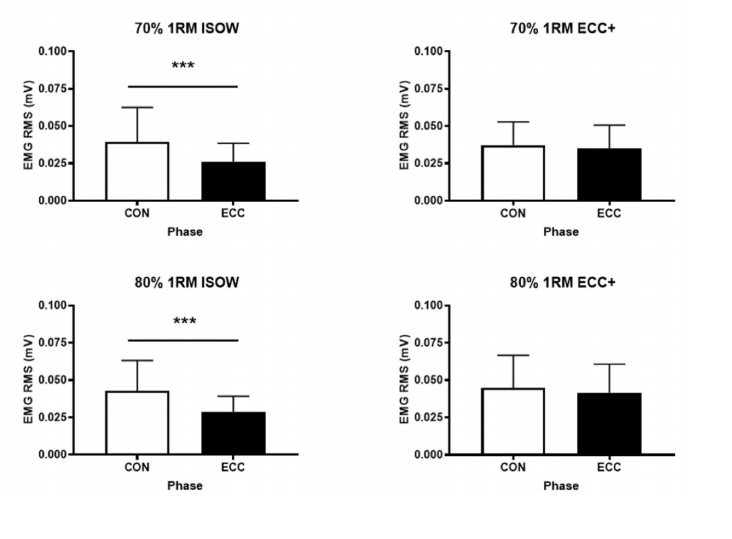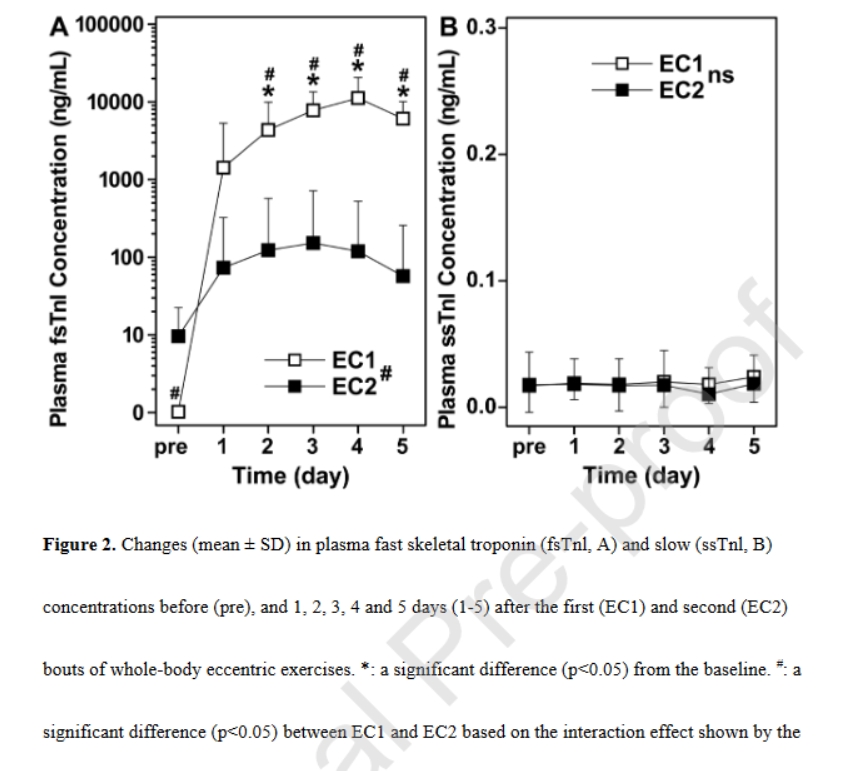Muscle activation during leg-press exercise with or without eccentric overload
F. Sarto, European Journal of Applied Physiology volume 120, pages1651–1656(2020)
Purpose
This study sought to investigate the electromyographic activity of the vastus lateralis (VL) muscle during concentric-eccentric exercise using a new concept leg press machine enabling a preset overloading in the eccentric phase.
Methods
Ten young males familiar with resistive exercise were recruited for this study. Tests were performed on a Leg-press Biostrength® (Technogym S.p.A., Italy). The load was set to 70% and 80% of one-repetition maximum (1-RM). The participants performed 2 sets of 6 repetitions at each relative load with (ECC +) and without (ISOW) an eccentric overload equivalent to 150% of the concentric load. A metronome was employed to maintain the selected cadence. Sets were separated by a 5-min rest. Surface electromyography (EMG) of VL was recorded and integrated (iEMG).
Results
Results showed a higher iEMG in ECC + with respect to ISOW at both intensities (+ 29% for 70% 1-RM, p < 0.01 and + 31% for 80% 1-RM, p < 0.001). No statistically significant differences were detected between concentric and eccentric phase in both ECC + conditions.
Conclusions
Training with a 150% eccentric overload provides a ~ 30% greater motor unit recruitment of the VL muscle in leg press exercise. Moreover, the results show that the eccentric overloading provided by the Biostrength® machine enables training at the same level of neural activation of the concentric phase. Hence, the derecruitment of motor units, normally observed during the eccentric phase when using conventional training machines, was overcome using the Biostrength® machine; this observation seems particularly important for maximizing neuromuscular responses to strength training.















